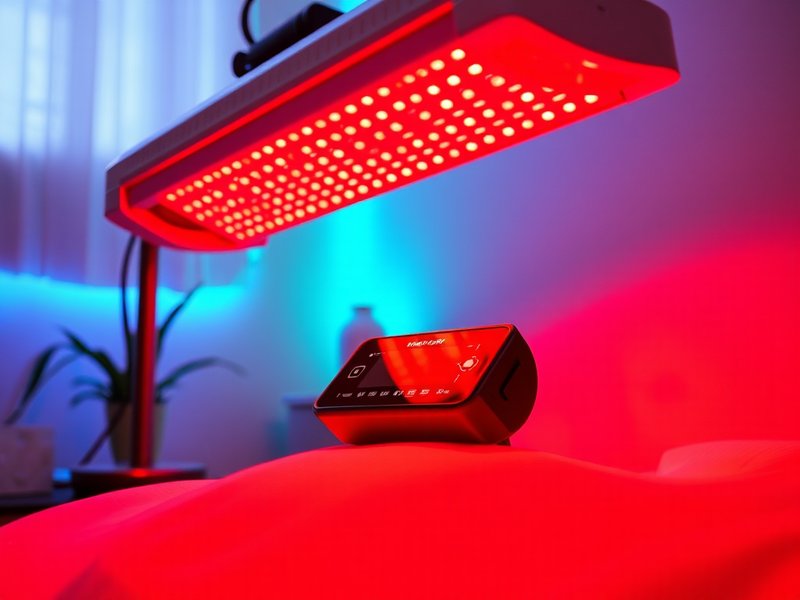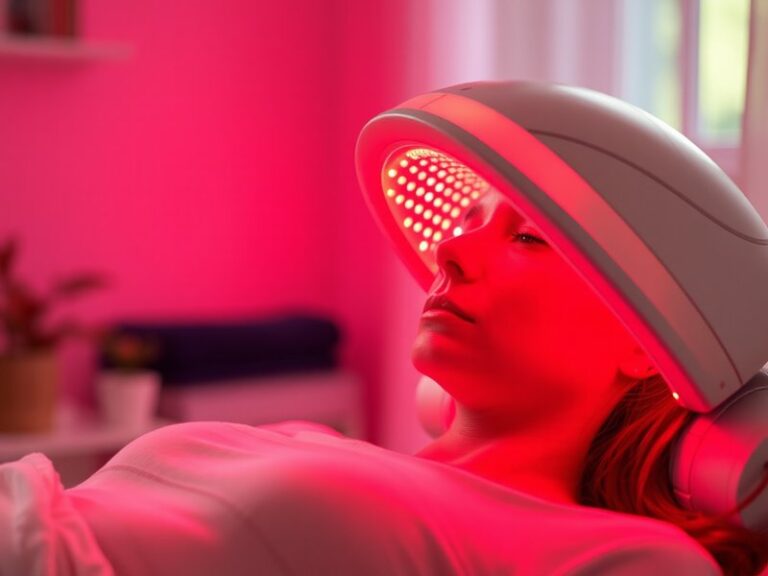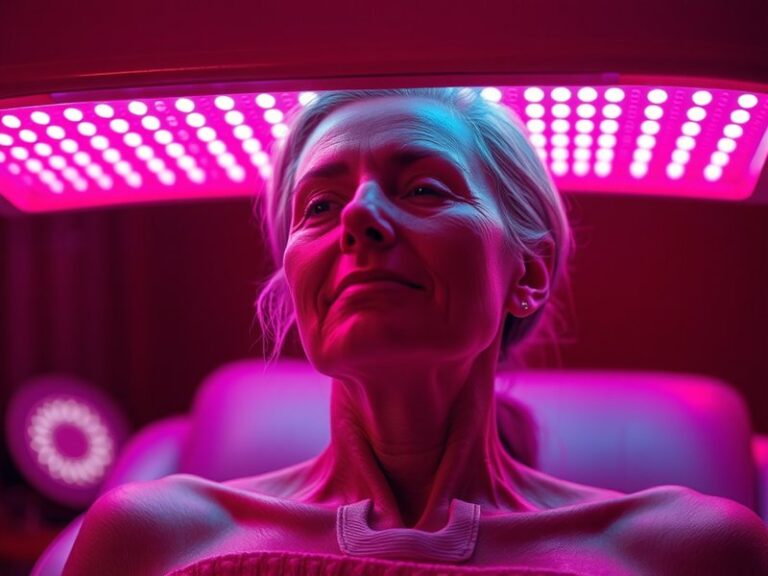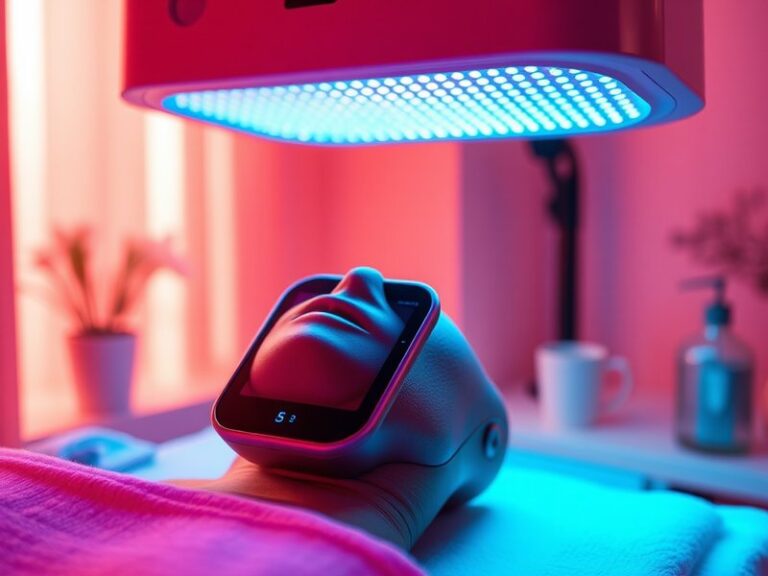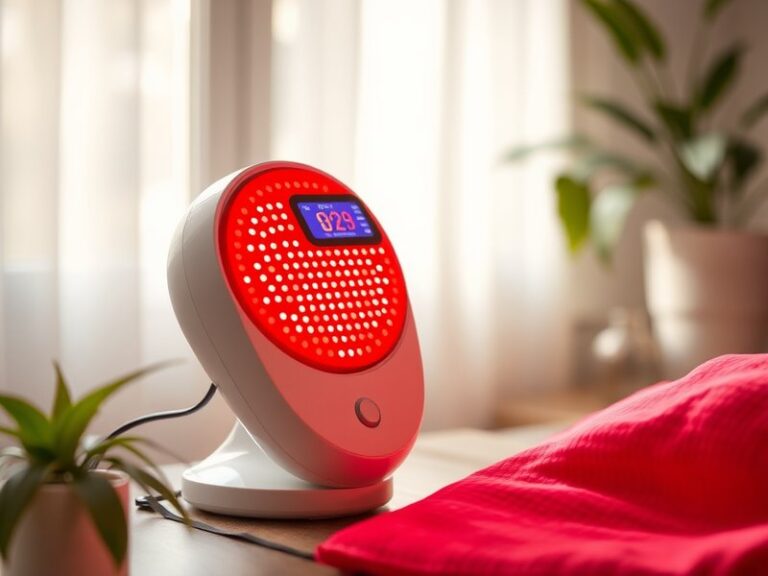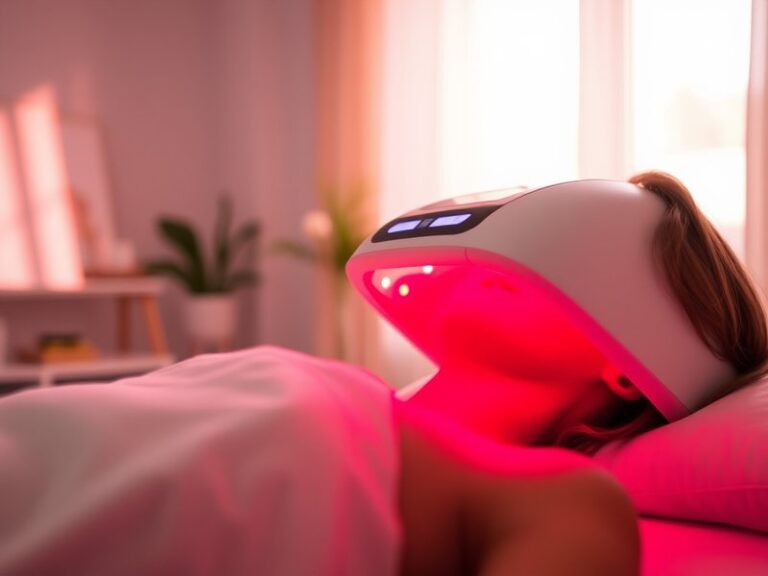What Kind Of Light Is Red Light Therapy?
What Kind of Light is Red Light Therapy?
Have you ever wondered how light can be used as a healing tool?
Red light therapy (RLT) has gained popularity in recent years for its purported health benefits. In this article, we will delve into what red light therapy is, its advantages, how it works, and important considerations to keep in mind before starting treatment. By understanding the nuances of RLT, you can better determine if it’s right for your health and wellness journey.
Key Takeaways
- Red light therapy utilizes low wavelengths of red light to stimulate cellular function and promote healing.
- Benefits include improved skin health, reduced inflammation, and enhanced muscle recovery.
- It’s essential to assess your individual needs and consult a professional before starting RLT.
What is Red Light Therapy?
Red light therapy is a non-invasive treatment that employs specific wavelengths of light, primarily red and near-infrared light, to induce various biological processes in cells. This type of light is believed to penetrate the skin and promote healing at the cellular level.
Read the latest on Does Red Light Therapy Affect Botox?
The therapy works by activating the mitochondria, the powerhouse of cells, which in turn enhances energy production in the form of adenosine triphosphate (ATP). By increasing ATP levels, red light therapy can accelerate healing processes, reduce inflammation, and improve overall cellular function.
The wavelengths used in red light therapy typically range from 600 to 1000 nanometers. Devices that emit this light can include LED panels, handheld devices, and even beds designed for RLT. Understanding these aspects can help users feel more informed about the technology behind the therapy.
What are the Benefits of Red Light Therapy?
Red light therapy has been associated with a wide range of benefits, making it a popular option for those seeking alternative wellness therapies. Below are some of the key advantages:
Skin Health Improvement
Many users of red light therapy report noticeable improvements in skin conditions such as acne, rosacea, and aging signs. RLT can help enhance collagen production, leading to firmer skin and reduced wrinkles.
Check out the full post Can Red Light Therapy Be Bad?
Reduced Inflammation
RLT has been found to diminish inflammation in various body parts, making it beneficial for individuals with chronic inflammatory conditions. This reduction can aid in pain management and improve overall comfort.
Enhanced Muscle Recovery
Athletes and fitness enthusiasts often utilize red light therapy to expedite muscle recovery post-exercise. By improving circulation and reducing oxidative stress, RLT can help speed up healing time and alleviate soreness.
Additional Benefits
- Improved joint health by reducing symptoms of arthritis.
- Increased hair growth in individuals experiencing hair loss or thinning.
- Enhanced mood and sleep quality through stress reduction.
Is it Possible to Use Red Light Therapy at Home?
Yes, many individuals now turn to at-home red light therapy devices for convenience and personal care. However, while using RLT at home is feasible, several key points should be considered.
What are the Advantages of At-Home Red Light Therapy?
Using red light therapy at home offers various benefits:
- Convenience: You can incorporate RLT into your daily routine without scheduling appointments.
- Cost-effective: Investing in an at-home device can be more economical than ongoing treatment at clinics.
- Control over treatment: Users can customize their therapy durations and settings as needed.
What are the Disadvantages of At-Home Red Light Therapy?
Despite its benefits, at-home red light therapy also comes with challenges:
- Effectiveness: Devices may vary significantly in quality and efficacy, leading to inconsistent results.
- Lack of professional guidance: Without the supervision of a trained practitioner, users may not understand proper usage or settings.
- Potential for misuse: Incorrect use could lead to ineffective treatment or skin irritation.
What are the Things to Consider Before Using Red Light Therapy?
Prior to starting red light therapy, it’s crucial to consider several factors to ensure a safe and effective experience.
Personal Health Status
Evaluate your current health conditions. Individuals with certain medical conditions or those taking photosensitizing medications should consult a healthcare professional before beginning RLT.
Device Quality
Research and choose a high-quality device that emits the appropriate wavelengths of light for therapeutic benefits. Look for reputable brands and customer reviews.
Session Duration and Frequency
Determine how often and for how long you should use red light therapy. A standard recommendation is often 10-20 minutes per session, several times per week, but personal needs can vary.
Additional Considerations
- Skin sensitivity: Individuals should monitor their skin’s response to therapy to avoid irritation.
- Professional consultation: Seek advice from a qualified provider to create a personalized treatment plan.
What are the Alternatives to Red Light Therapy?
If red light therapy doesn’t seem like the right fit for you, several alternative treatments for skin health and wellness exist.
Laser Therapy
Laser therapy provides targeted treatment for various skin conditions, utilizing specific wavelengths of light to promote healing and rejuvenation.
Ultrasound Therapy
This non-invasive treatment uses sound waves to promote tissue healing and reduce inflammation, providing an alternative method to address pain and recovery.
Cryotherapy
Cryotherapy involves using cold temperatures to reduce inflammation and promote recovery. It can serve those looking to alleviate pain and expedite healing without light therapy.
More Alternatives
- Topical treatments: Creams and serums can address skin concerns directly.
- Infrared saunas: These use heat rather than light to promote detoxification and relaxation.
- Acupuncture: This ancient practice can target pain relief and inflammation in a holistic manner.
Conclusion: Is it Recommended to Use Red Light Therapy?
Red light therapy presents a variety of potential benefits, particularly for skin health, pain management, and overall recovery. However, individual experiences may vary based on health conditions and the specific devices used. Consulting with a healthcare professional can help tailor a safe and effective approach to incorporating RLT into your wellness routine.
Frequently Asked Questions
What conditions can red light therapy treat?
Red light therapy has shown benefits in treating a range of conditions, including skin issues, joint pain, muscle soreness, and even hair loss.
How long does it take to see results from red light therapy?
While some may notice improvements after a few sessions, optimal results typically manifest after consistent use over weeks or months.
Is red light therapy safe?
Generally, red light therapy is considered safe with minimal side effects. However, it’s important to follow guidelines and consult with a professional if you have underlying health issues.
Can anyone use red light therapy?
Most people can benefit from red light therapy, but those with specific medical conditions or skin sensitivities should consult a healthcare provider before use.
How often should I use red light therapy?
Frequency can vary based on individual goals, but many practitioners recommend 2-3 times per week to achieve noticeable results.
